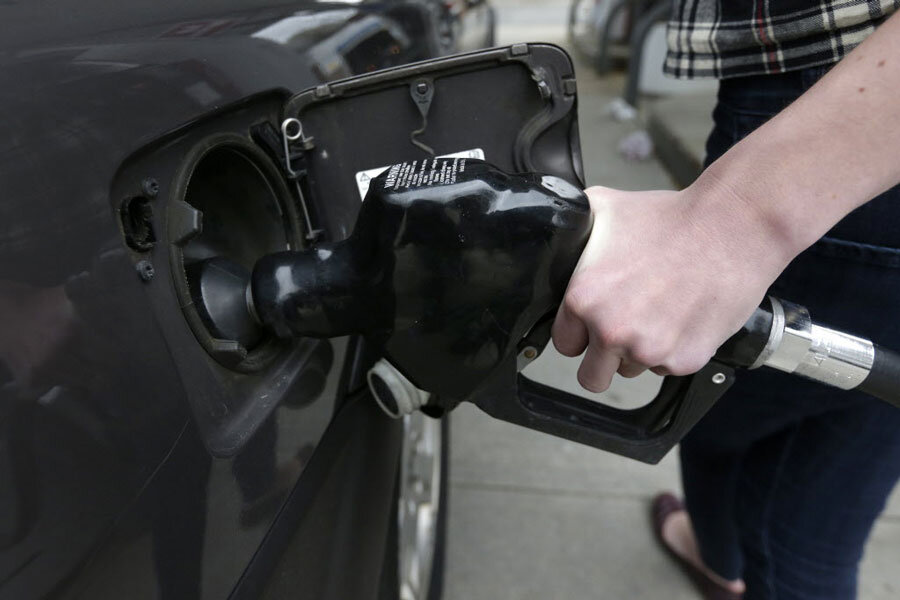Gas prices head below $3. Will your state go that low?
Loading...
| Washington
Despite heightened conflict in the Middle East and ongoing tensions between Russia and the West, the price of gasoline may be headed toward prices below $3 a gallon in many parts of the country.
Already, the current average price of $3.34 per gallon for a gallon of regular gas is down about 10 cents in the past month, and down a similar amount from year-ago levels, according to the drivers group AAA.
As of Friday, the national average is the lowest in more than seven months – a trend based partly on restrained demand as well as by the revival of the US as a major oil-producing nation.
In some parts of the country, prices already have a 2-handle. If you live in Pemiscot County in Missouri or Panola County in Mississippi – or happen to be fueling up there on a cross-country trip – you’re already paying less than $3 at the pump, according to gas-station prices tracked by GasBuddy.com.
By the end of the year, up to 30 states could have an average gasoline price of less than $3 a gallon, according to a GasBuddy forecast publicized in news reports this week.
Will your state be one of them?
If you live in a western or northern coastal state, the prospect could be, well, California dreamin’. States with the highest average prices for regular currently are Hawaii ($4.21), Alaska ($3.93), Washington ($3.72), Oregon ($3.72), and California ($3.71). East Coast states Connecticut ($3.64) and New York ($3.62) aren’t far behind.
Still, people in many parts of the country – notably in Southern states from Arizona to Virginia – already have average prices within 30 cents of the $3 line. And states including New Jersey, Minnesota, and Iowa are also on that list. The numbers come from the AAA’s Daily Fuel Gauge Report.
However much prices end up dropping, though, it will be a welcome boost for consumers who are struggling with living costs at a time of lean wage hikes. Rising tuition and health-care costs have been persistent challenges for US households in recent years – and gasoline prices have typically outpaced the overall inflation rate.
Since the recession, though, demand for gasoline hasn’t picked up to pre-slump levels – a sign not just of consumer restraint but also of automobiles’ rising fuel efficiency.
Each fall, moreover, prices tend to drop as the vacation season ends and as refiners switch from summer to winter blends of fuel.
The US hasn’t seen the average price of regular starting with a “2” since the end of 2010, when prices were only starting to recover from their recession lows, according to US government data from the Energy Information Administration.
So far, turbulence in the Middle East and friction over Russia’s intervention in Ukraine haven’t spilled over with negative consequences for global oil markets. That could always change, but for now the message from some energy forecasters is a positive one: Enjoy the ride downward for fuel-pump prices.








